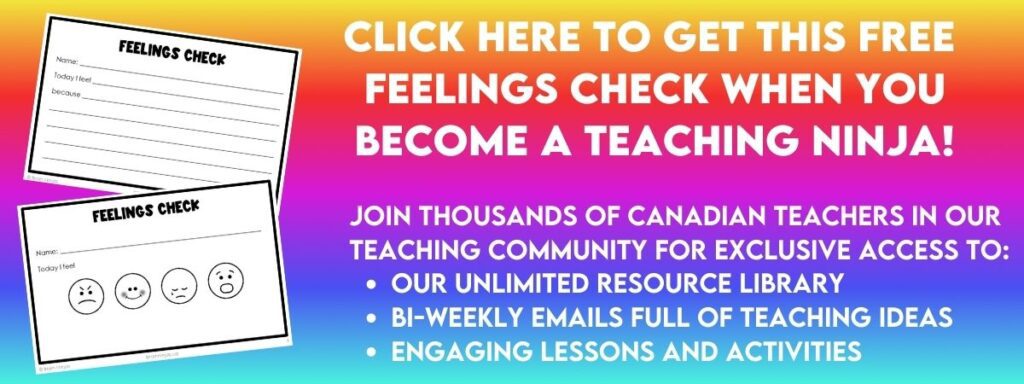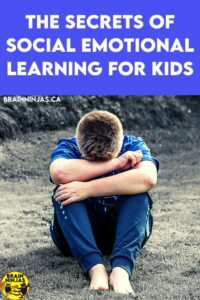
We believe firmly in social-emotional learning (or SEL), self-regulation and teaching students about feelings. Students today struggle with identifying feelings, managing their emotions and staying focused.
Let’s not get into all the causes of why some students are unable to describe and manage their feelings, but more and more instructional time becomes wasted unless we intentionally teach students about to self-regulate.
These are some of the best tools we use in our classroom every single day by incorporating them into our health lessons. You might even want to check out our posts: Stop Overlooking Health Class or Make Wellness a Priority in Your Classroom.
We Teach Feelings as Part of Social Emotional Learning
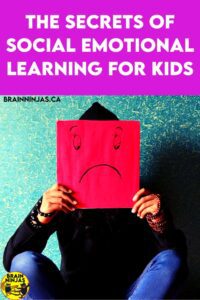
We start the school year every year by learning all the possible words to describe feelings and emotions. Students need to develop a vocabulary to describe their emotions if we expect them to talk about how they are feeling in different situations.
Feeling frustrated, annoyed or disappointed could be caused by very different reasons, but most of our students were describing everything as mad. Well, mad isn’t specific enough and it took a while for students to learn to describe their emotions well enough.
Because frankly, we can’t address the problem if we can’t determine the actual emotion we’re feeling.
We even wrote an entire unit full of lessons you can use by simply printing it out and getting started. Find the Managing Feelings Unit for Grades 1-3 in our TpT Store ($USD) or our BN Shop ($CAN). It is also available in the year-long set in our TpT Store ($USD) and our BN Shop ($CAN).
There is also a Managing Feelings Unit for Grades 4-6 in our TpT Store ($USD) and our BN Shop ($CAN). It is also available in a year-long set in our TpT Store ($USD) and our BN Shop ($CAN).
We also have a set of feelings words that can be turned into a word wall. Find the Managing Feelings Word Wall Set in our TpT Store ($USD) and our BN Shop ($CAN). The word wall helps support the lessons. It is included in the year-long sets.
Validate the Emotions of Students
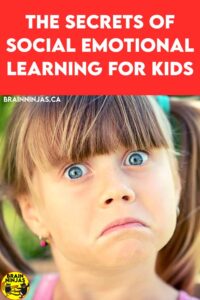
I’m sure you’ve seen this situation: a parent with their young child who is having a temper tantrum or is crying and the parent says, “Don’t be sad.”
This is a personal pet peeve. What does that mean? Does it mean you can’t be sad? Is it wrong to feel sad? Does it mean you’ll be mad if the child becomes sad?
When you tell a child how to feel how what or when to feel it, you don’t teach them anything about their own feelings.
There is no such thing as a wrong feeling. Students are entitled to feel however they feel for whatever reason they feel it no matter what. They should feel safe enough to feel their feelings, talk about them, express them and question them however and whenever they want.
As teachers (and if you’re also a parent) our role is to help students understand what all the feelings are and how to cope with the different feelings in a safe and controlled way.
We do this by sharing our feelings (even if we make them up) to model situations. Simple statements that students can relate to can help students understand that everyone (even seemingly well-put-together teachers) can have feelings. We use Feeling Check Slips to help our students get comfortable with sharing their feelings. We can send you a copy by email or you can find it in our Resource Library.
Try This:
Think about some of these statements and how your students would respond to them:
I get frustrated when someone tries to help me before I’ve tried it myself. And I like to try something out before someone else helps.
Because I feel excited when I know it’s the weekend because I like to spend time with my friends and don’t have to work so hard.
I feel sad when I think about my cat who died. Snuggling her again would be nice.
Don’t Make Assumptions About Student Feelings
Tears don’t always mean sadness. A student who is angry, frustrated, disappointed, overwhelmed, anxious or even happy might have tears. Instead, ask the student what he or she is feeling. You might be surprised and allowing the student to tell you how they are feeling will validate their feelings. This will strengthen the relationship you have with the student and make managing the feelings less stressful for everyone in the future.
One way to learn more about how your students are feeling and help them learn to express is to teach them to use a simple feelings statement.
I feel ______________ because _______________.
We start by modelling this type of statement (those quotes above will work) and then as students to try it orally by making up a statement with a partner. We share all these statements as a class.
One rule we have is that when we are sharing feelings publicly in the classroom, we have permission to make up a feeling to share in front of people. This way students don’t feel pressured to share feelings they aren’t prepared to share with the whole class. We save their real feelings for more private situations.
Our classroom has a rule that all the feelings shared in class are private and we don’t share them with other students, friends or people at home. We can talk about the feelings, but not the person that shared them.
By using these two rules most of the students feel secure enough to share their personal feelings in front of the class.
Try This:
You can do these feeling checks at the beginning of the day, end of the day, as you enter or exit the classroom, during classroom meetings or pretty much any other time you can think of. They can be done with the whole class or individually, and they will really help you identify when, how or what situations cause the most stress, frustration or grief for your students.
Our feeling checking helped us identify a struggle most students were having with math. We noticed behaviours that were coming up for several students, and talking about our feelings led to a whole other lesson about The Learning Pit and growth mindset. We encourage you to check out that blog post if you’re also noticing troubling behaviours in a specific subject or with a particular group.
Books Are Perfect For Social Emotional Learning
This is a list of books we’ve been collecting both in our classroom library and school library. We are always looking to add to this list as we’ve noticed publishers are really starting to publish more and more of these types of books over the past few years.
Even upper elementary students love to be read to, so we start our school year by trying to read as many of these as possible. The rest are read throughout the year.
One of our favourite authors who tackles social-emotional learning is teacher and mental health advocate Julia Cook. You cannot go wrong with any of her books. We recommend visiting her website which includes resources for teachers and parents.
Books for Social-Emotional Learning
A Bad Case of Tattle Tongue by Julia Cook
What is a person to do when they just cannot stop tattling on everyone?
The Recess Queen by Alexis O’Neill and Laura Huliska-Beith
This is the perfect book (especially if your students are starting to show a mean streak). It shows what happens to you if you’re mean and how to deal with a mean queen.
My Mouth is Volcano by Julia Cook
This book helps control our inside thoughts and keep them from blurting out all over the place. It’s also super cute!
I Just Don’t Like the Sound of No!: My Story About Accepting No for an Answer and Disagreeing the Right Way! by Julia Cook
This is a great one for those students who just don’t accept no the first (or fifth) time.
What If Everybody Did That? by Ellen Javernick
This book looks at the impact on everyone if nobody cared about anything.
Wilma Jean the Worry Machine by Julia Cook
This is a great one for talking about anxiety and how it makes us feel (especially good if you have some worriers).
The Most Magnificent Thing by Ashley Spires
Sometimes figuring things out takes a while and then it turns out even better than before. This is a wonderful read for the power of determination.
Making Friends is an Art by Julia Cook
So many students today struggle with making and keeping friends. Many students are isolated, don’t play well with others and don’t know how to start up a friendship. This book is a wonderful place to start.
Thanks for the Feedback, I Think by Julia Cook
This is a great one for teaching students how to accept feedback or criticism in a positive way (and expressing how feelings can get hurt by mean feedback).
More Books For Social Emotional Learning
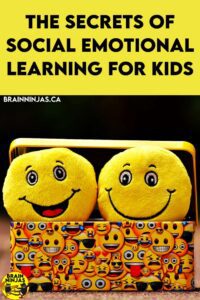
We Don’t Eat Our Classmates by Ryan T. Higgins
This is a great one to explain self-control.
That Rule Doesn’t Apply to Me! by Julia Cook
Yeah, here’s a way to deal with students who don’t think they have to follow any of the rules.
Do Unto Otters: A Book About Manners by Laurie Keller
This book cannot get any cuter and follows how we should act, especially around others.
Enemy Pie by Derek Munson
What would be the best revenge? This is a wonderful story about what might happen if you had the perfect recipe for an enemy pie.
Decibella and Her 6-Inch Voice by Julia Cook
Something happened to our students last year-they forgot how to whisper, so this was a great book to review how to be considerate of others by controlling your voice.
Where the Wild Things Are by Maurice Sendak
Sometimes things just get a little wild.
But It’s Not My Fault by Julia Cook
This book was a game-changer in our GRADE FIVE classroom to teach students how to own their mistakes and apologize genuinely. If you have a few students who are “never the ones” this is the book for you.
I Can’t Do That, YET: Growth Mindset by Esther Pia Cordova
If you are trying to teach your students about the power of having a growth mindset, this is a great book to start the conversation with.
Bubble Gum Brain: Ready, Get Mindset…Grow! by Julia Cook
Here is another fantastic read for a growth mindset.
And a Few More Books for Social Emotional Learning
The Name Jar by Yangsook Choi
When you have an unusual name that no one can pronounce it can be challenging. This is an amazing book to start a school year or if you have students with beautiful but challenging to learn names. I wish this book had been around when I was a child.
Personal Space Camp by Julia Cook
This is a great book to discuss personal space both for people learning to stay out of other people’s space and for people who need a more tactful but clear approach to asking people to stay out of your space.
What Were You Thinking?: Learning to Control Your Impulses by Bryan Smith
This is the perfect book for your students who just cannot stop doing the things they know annoy everyone.
Baditude! What to do When Your Life Stinks! by Julia Cook
This is a super read for those kids who just can’t find the positive in the situation.
The Day You Begin by Jacqueline Woodson
Sometimes reaching out is the hardest thing to do. This is a great read to help your students understand how to get started when they’re too afraid to reach out.
I Can’t Believe You Said That! My Story About Using My Social Filter? Or Not! Book by Julia Cook
The world has become a place where everyone feels they should have the right to say anything they want without consequences, but that can cause all kinds of problems. Here’s a way to teach students about how to use their filters (and why filters are important in certain situations).
And a Few Last Books
My Day is Ruined!: A Story Teaching Flexible Thinking by Bryan Smith
If you have a student who cannot handle unexpected changes, this is a great way to start a conversation about being flexible. Read this one before you have a substitute teacher.
Teamwork Isn’t My Thing, and I Don’t Like to Share by Julia Cook
Read this one before doing your first group work project to help students talk about possible conflicts before they happen.
The Anti-Test Anxiety Society by Julia Cook
Test-taking can send anyone (even teachers) over the edge of the anxiety cliff. Start a conversation with this read.
Sorry, I Forgot to Ask: My Story About Asking Permission and Making an Apology Book by Julia Cook
This is a great way to introduce consent to younger students.
Tessie Tames Her Tongue: A Book About Learning When to Talk and When to Listen by Melissa Martin
Teaching students to listen and hear the feelings of others can be challenging for younger students. This book helps.
After the Fall (How Humpty Dumpty Got Back Up Again) by Dan Santat
Teaching students how to fail and keep going is always a challenge, but this book gives students another perspective.
Worst Day of My Life Ever: Book by Julia Cook
Another great read for your classroom pessimist.
The Girl Who Never Made Mistakes by Mark Pett and Gary Rubinstein
If you have some perfectionists who won’t take learning risks out of fear of making mistakes-start here.
I Just Want to Do It My Way: My Story About Staying on Task and Asking for Help Book by Julia Cook
If you have kids who don’t understand why some things have to be done a certain way, this is a good start.
Here Are Some of Our Booklists For Other Lessons
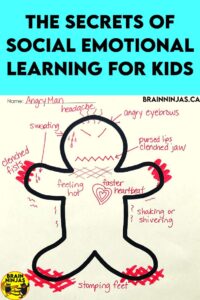
We have several other sets of book lists for other subjects and topics. You can check out:
- Books About Kindness
- Cozy Up With Great Winter Books
- Books for Lunar New Year
- Christmas Books We Love
- Books for Remembrance Day
- Orange Shirt Day (Residential Schools)
- Books for Ramadan and Eid
- Holi Festival of Colours
- Poetry Books
- Black History Month Books
- Books With Great LGTBQ+ Characters
- Asian History Month
- Earth Day
- Thanksgiving
- Books for and About Powerful Women
- Books by Indigenous Authors
And if you think we’ve missed a book on our list, please let us know. We’re always adding to it.

